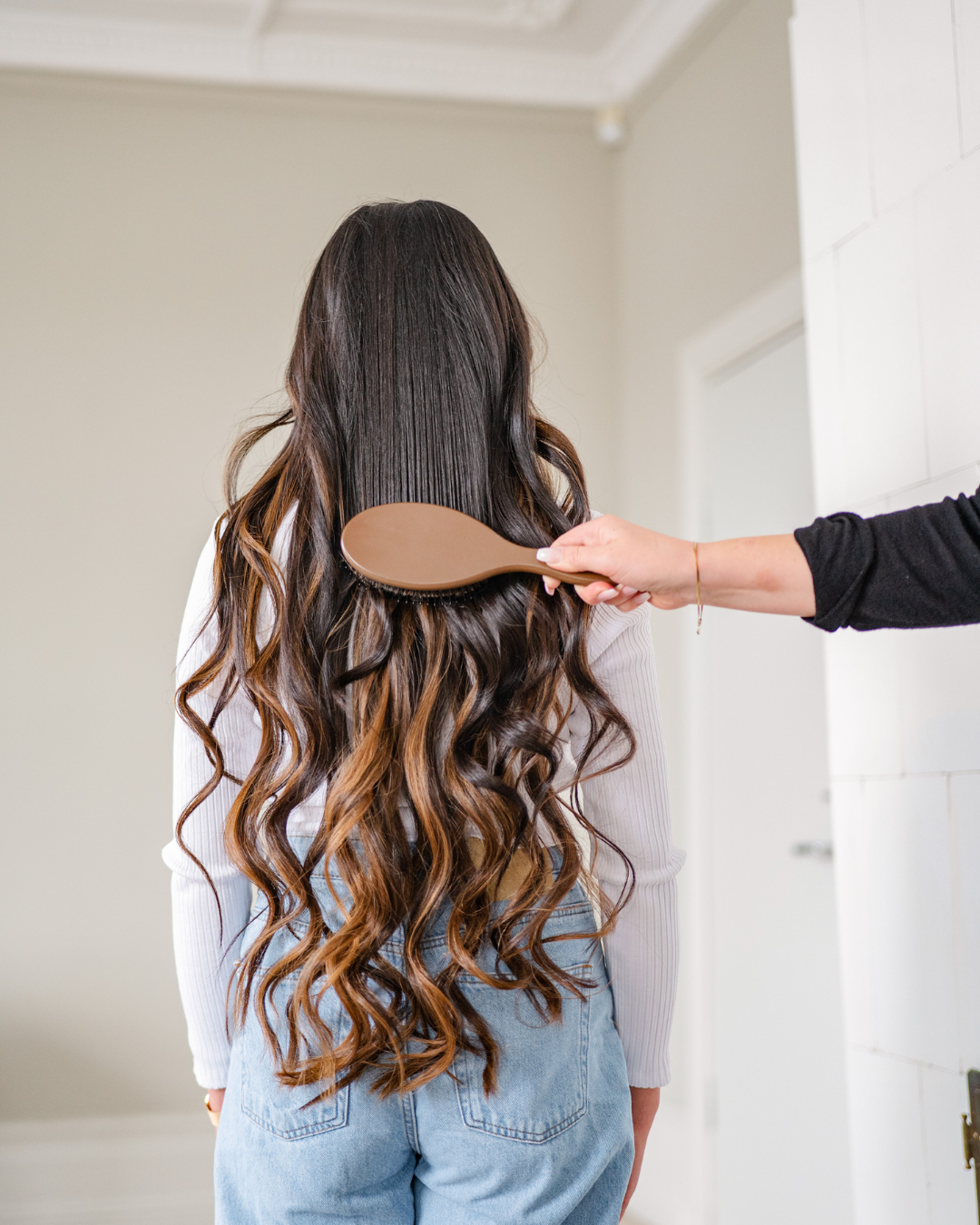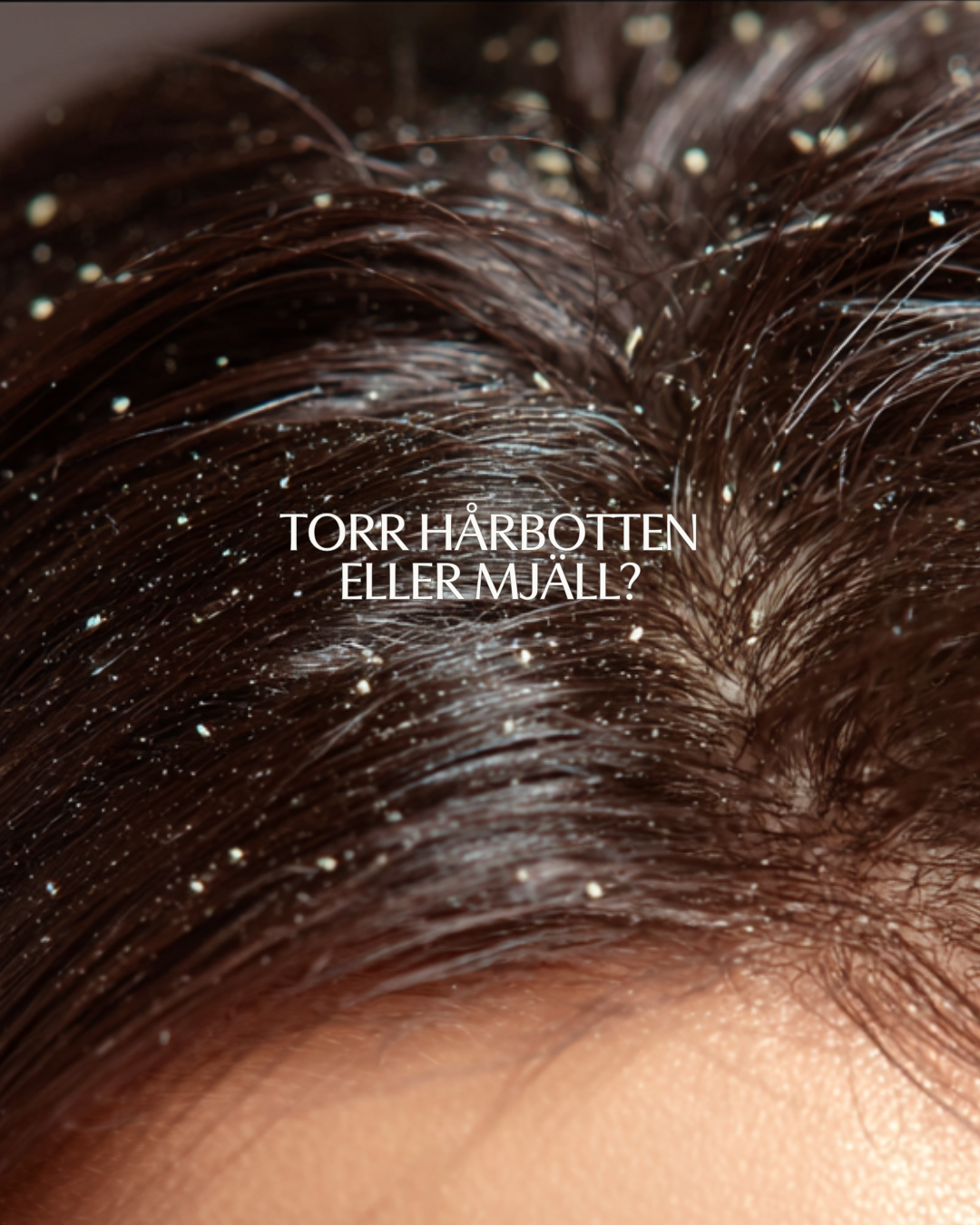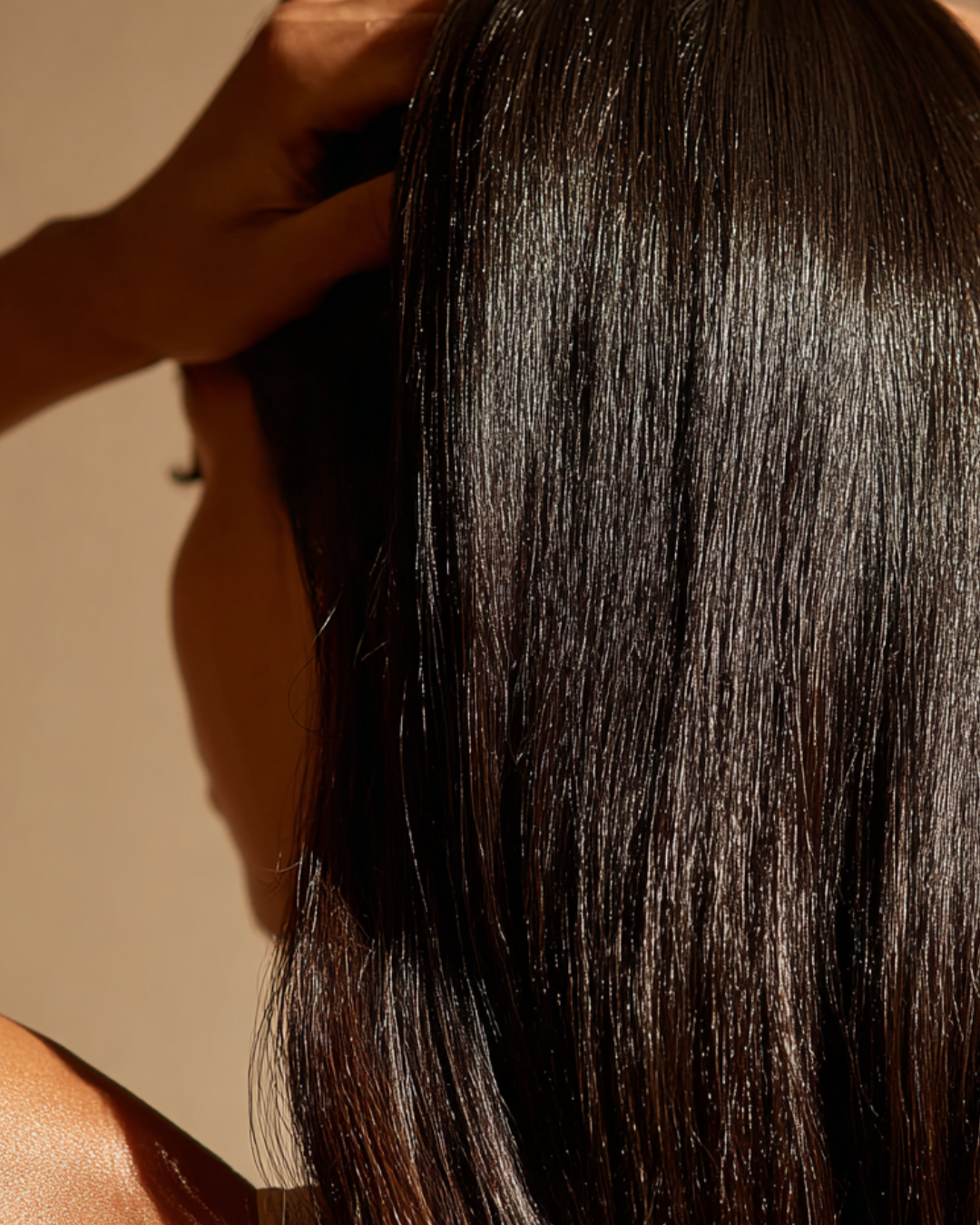Losing hair after pregnancy or during periods of stress is more common than you might think. Many people describe how their hair suddenly appears in large clumps on their pillow, in the shower or stuck in their brush. It can feel alarming, but in most cases it is completely normal and temporary. Here we go over why hair loss occurs, when hair grows back and what you can do to strengthen your scalp and stimulate new growth.
Why do you lose hair after pregnancy?
During pregnancy, estrogen levels in the body increase, causing more hair to remain in the growth phase. Hair often feels thicker, shinier, and stronger than ever. After giving birth, hormone levels drop rapidly, causing many of the hairs that were “resting” to simultaneously enter the resting phase and fall out. This is called postpartum hair loss and usually begins to be noticed around three to four months after giving birth. This is not because the hair stops growing, but because the hair that should have fallen out during pregnancy is only now doing so.
When does hair grow back?
For most people, hair growth returns to normal within six to twelve months. New, small hairs begin to appear along the hairline and volume gradually recovers. However, it may take longer if you are also experiencing stress, lack of sleep or nutritional deficiencies, which often accompany the toddler years .
Losing hair due to stress or season
The body reacts to stress by prioritizing hair growth. This is because stress hormones affect blood circulation in the scalp and disrupt the natural growth cycle. The result is that more hairs enter the resting phase at the same time. Seasons also affect hair loss. Many people lose more hair in the fall because hair is naturally replaced after the summer, just like animals shed their fur, although on a much smaller scale.
Studies show that more hair follicles are in the resting phase (telogen phase) during late spring and summer, which means more hair naturally falls out in the fall. This has been observed in several dermatological studies, including:
- Seasonality of hair shedding in healthy women" – British Journal of Dermatology, 2009
The researchers saw that hair loss increased slightly during September to November, while spring and winter showed lower levels of hair loss.

What you can do yourself
- Stimulate the scalp with massage and the right brush
When blood circulation to the scalp increases, the supply of oxygen and nutrients to the hair follicles improves. A simple routine of brushing and massaging every day can make a big difference. Your Hair Brush is designed to combine boar bristles and soft nylon bristles that both stimulate the scalp and distribute natural oils from the roots to the ends. It strengthens the hair shaft, balances the scalp and promotes a healthy growth environment. - Care for your scalp like your skin
Treat your scalp like you would your face. Cleanse gently, avoid products with harsh sulfates, and add moisture. Products containing niacinamide, biotin, peptides, and caffeine can help balance your scalp and strengthen your hair roots. - Nourishment from within
The body needs building blocks to create strong hair. Protein, iron, zinc, vitamin D and B vitamins are essential. Eat a varied diet with a focus on eggs, beans, fish, vegetables and whole grains. Also keep in mind that hair loss is often linked to lack of sleep. Rest and recovery are part of the treatment. - Avoid unnecessary wear and tear
When your hair is in a sensitive phase, it's extra important to be gentle. Avoid brushing too much on wet hair, use heat protection when styling, and use Your Hair Brush, which reduces friction and is gentle on the lengths.

When should you seek help?
If your hair loss doesn't stop after a year, if you develop bald patches or are losing hair in unusually large amounts, it may be a good idea to contact a health center or dermatologist. Sometimes the cause may be a hormonal imbalance, thyroid disorder or iron deficiency, which can be treated.
Losing hair after pregnancy , stress or the change of seasons is normal - but it can feel difficult. By taking care of your scalp, stimulating circulation and giving your body the right nutrition, you can speed up regrowth. With Your Hair Brush you get a gentle tool that helps your scalp regain balance, strengthens your hair from the root and creates the conditions for healthier growth.




